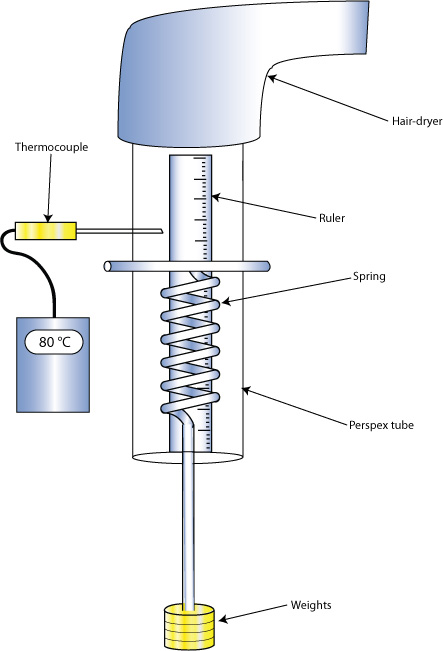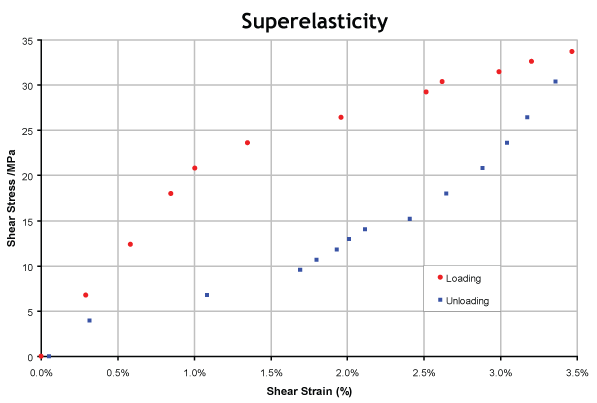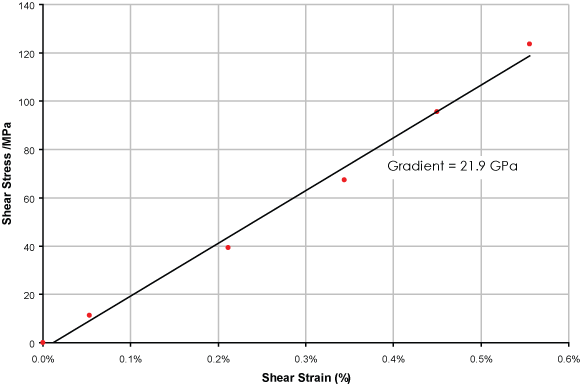Superelasticity - Hysteresis in the Stress-Strain Behaviour
Stress-strain plots of SE alloys exhibit pronounced hysteresis, since the reverse (martensite- austenite) transformation does not occur at the same stress levels during unloading as the forward transformation did during loading. This is analogous to the hysteresis observed during thermal cycling, and occurs for the same reasons - ie extra driving force is required due to the stored elastic strain energy contribution.

Diagram of apparatus to investigate superelasticity of a Ni-Ti spring
To investigate superelasticity a coil of Ni- 43at%Ti wire was held at a temperature above it’s Af temperature inside a perspex tube and was then loaded and unloaded with the associated extensions recorded. Superelastic behaviour can readily be illustrated using a specimen in the form of a spring. This geometry is very convenient for such purposes, since it allows large macroscopic extensions to be generated, while the local strain (which is pure shear) remains relatively low. The relationship between local and macroscopic strains, and the role of wire diameter and spring diameter, are fully explained here..
This clearly shows the hysteresis expected.
From the initial (linear) relationship between stress and strain , the Young’s Modulus of the austenitic phase can be obtained. The gradient gives the shear modulus, which can be converted to the Young’s Modulus using

Where G is the shear modulus, E is the Young modulus and ν is the Poisson ratio, for Nitinol ν ~ 0.3.

This leads to a value for E of about 60 GPa, which is in the range expected.

